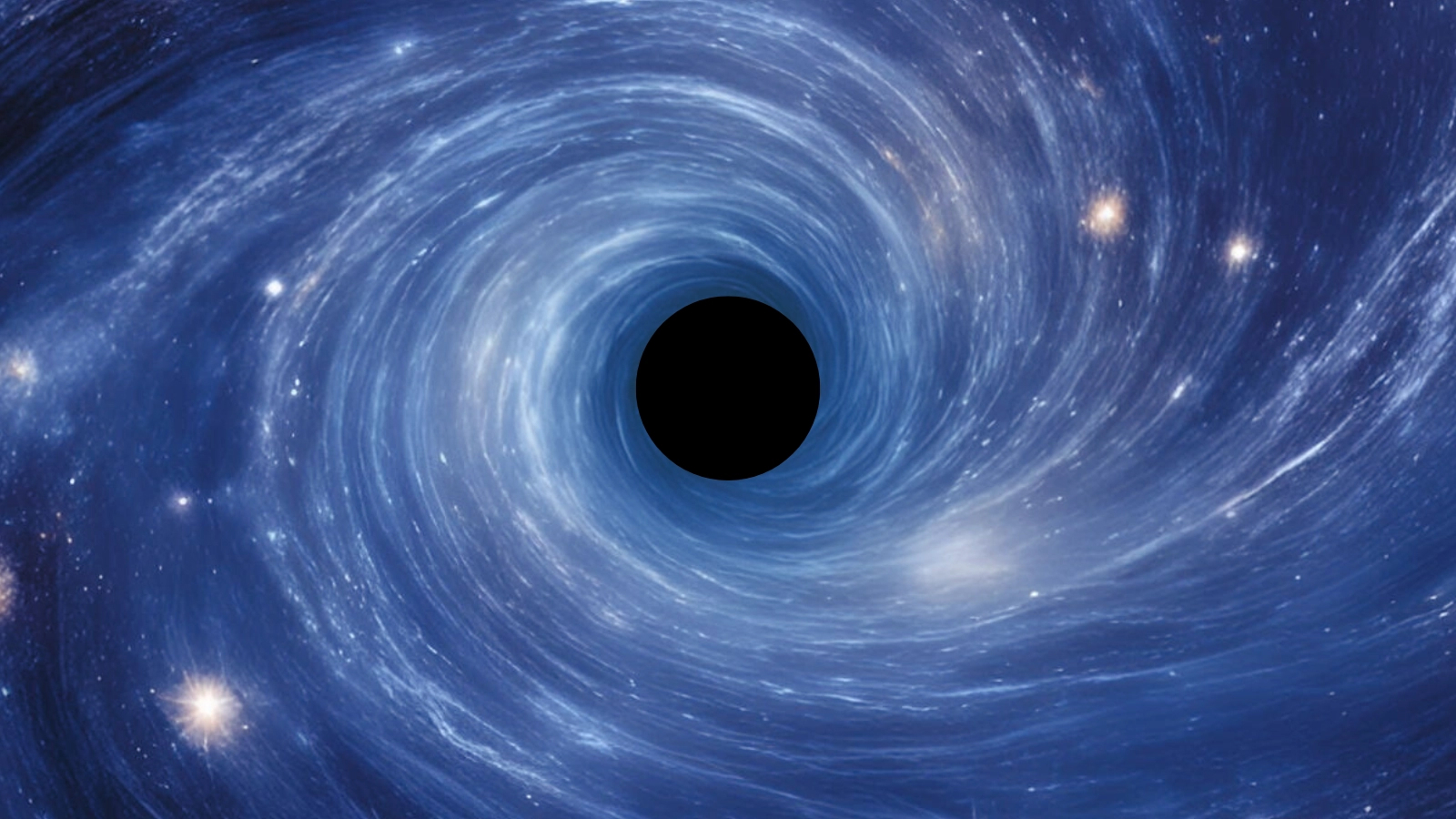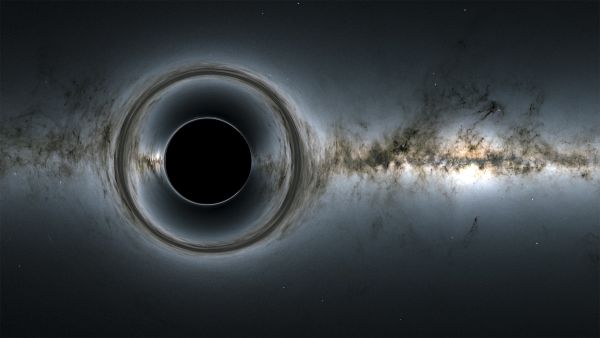When you purchase through data link on our site , we may realize an affiliate commission . Here ’s how it put to work .
If you were to plunge into a disastrous hole ( something we would not commend ) , you"d in all probability detect a uniqueness , or an immeasurably small and impenetrable stage , at the shopping center . Or that"s what physicist have always thought .
But now a twosome of scientists suggest that some black gob may not be black holes at all . Instead , they may be unearthly objects wedge - full ofdark energy — the mysterious force think to be pushing at the bounds of the universe , get it to expand at an ever - increasing charge per unit .

Need more space?You can get 5 issues of our partner “All About Space” Magazine for $5for the latest amazing news from the final frontier!
Related:9 Ideas About Black Holes that Will foul up Your Mind
" If what we call up were ignominious holes are really objects without singularities , then the accelerated enlargement of our macrocosm is a born consequence of Einstein ’s theory of generalrelativity , " said Kevin Croker , an astrophysicist at the University of Hawaii at Mānoa .
Croker and a colleague line this thought in a unexampled study , published online Aug. 28 in theAstrophysical Journal . If they are proper , and the uniqueness at the heart of a black hole could be replaced by a weird energy flinging everything apart , that may revolutionize the fashion we think about these dense objects .

Need more space?You can get 5 issues of our partner “All About Space” Magazine for $5for the latest amazing news from the final frontier!
The brace was not out to uncover what ’s inside a pitch-dark hole . Croker and Joel Weiner , a professor emeritus in maths at the same university , were look at Friedmann ’s equations , which are simplify from Einstein ’s theory of world-wide relativity theory . ( relativity theory describes how sight and energy deflection space - time . ) Physicists utilise Friedmann ’s equations to describe the expansion of the universe , in part because the math is unsubdivided than in Einstein ’s body of equivalence describing theory of relativity . The team constitute that , in club to decent write down Friedmann ’s equations , ultradense and isolated part of outer space , like neutron stars and ignominious holes , had to be treated in the same numerical means as all other areas . Previously , cosmologists believed it was fairish to snub the internal details of ultradense and separated regions , such as the interior of a black hole .
" We showed there ’s only one way of life to [ manufacture these equation ] right , " Croker secernate Live Science . " And if you do it that one way , which is the correct way to do it , you determine some interesting things . "
The new results advise that all the dreary vigor demand for the accelerated expansion of the universe could be incorporate in these choice to black pickle . The researchers discovered this in the math , after they had adjust the direction to compose out Friedmann ’s equations . And in a keep abreast - up paper accede to The Astrophysical Journal and post Sept. 7 on the preprint journalarXiv , they showed that these alternatives to black holes , call in Generic Objects of Dark Energy ( GEODEs ) , could also help explain distinctive feature in gravitational - wave reflexion from 2016 .

The math from Friedmann ’s equations evidence that over clip , these ultradense objects gain weightiness but due to theexpansion of the universe , even when there is no nearby material for them to wipe out . Just as light traveling through expanding outer space lose push — an effect make out as red shift — matter also lose weightiness as space expands . The outcome is usually so diminutive it can not be date . But in ultradense cloth with very strong pressure inside , known as relativistic material , the effect becomes obtrusive . glowering energy is very relativistic , and its pressing acts oppositely to normal issue and sparkle — so objects made of it ( like these hypothetical geode ) gain system of weights over time .
" Light is sort of a unearthly thing . It behaves counterintuitively , in many ways , " Croker say . " People did n’t expect that this behavior could also be march in other objective . But we show , yes , you’re able to see it in another object , " namely inside GEODEs .
geode were first offer as an idea in the 1960s , but the math defend them was only worked out late . But it turn out these weird objects could also provide a simple explanation for observed large mordant hole fusion . In 2016 , penis of the Laser Interferometer Gravitational - Wave Observatory ( LIGO)-Virgo collaborationism announcedthey had the first - ever observations of a smuggled hole fusion , but the deliberate peck of the supposed black holes was unexpected — scientists expect the masses to be either much high-pitched or lower .

But GEODEs , unlike traditional black holes , gain weightiness over time . If two GEODEs that had formed in the unseasoned universe finally clash , by the time they jar , they would have produce larger than distinctive disgraceful holes . By that full point , the geode ' masses would match the masses seen in the collision observed by LIGO - Virgo . Instead of having to conceive of a highly specific situation that lead to the unification , geode could provide a simpler result to explain the observations .
Not all scientists are convinced , though . The new description of these objects is " counterintuitive and surd to digest , " Vitor Cardoso , professor of physics at Instituto Superior Técnico in Lisbon , Portugal , who was not involved with the cogitation , secern Live Science in an electronic mail . But , he bestow , " I care the estimation of finding alternatives to black holes — it forces us to strengthen the mordant - pickle paradigm . Also , sometimes it ’s heavy to find thing if we do n’t await for them . "
Originally published onLive scientific discipline .
















